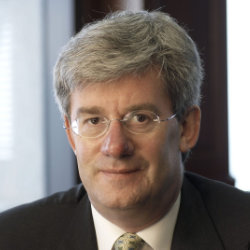Writer

Saul Eslake
Saul Eslake worked as an economist in the Australian financial markets for more than 25 years, including as Chief Economist at McIntosh Securities (a stockbroking firm) in the late 1980s, Chief Economist (International) at National Mutual Funds Management in the early 1990s, as Chief Economist at the Australia & New Zealand Banking Group (ANZ) from 1995 to 2009, and as Chief Economist (Australia & New Zealand) for Bank of America Merrill Lynch from 2011 until June 2015.
-
Is China heading for some kind of ‘currency crisis’?
In the short term, no. But over the medium- to longer-term, the possibility of a Chinese ‘currency crisis’ – by which I mean an abrupt fall in the value of the renminbi against other currencies, prompted by large capital outflows, and possibly entailing large falls in the values of other Chinese assets – cannot be Continue reading »
-
Have we passed ‘Peak China’?
Saul Eslake, the renowned and independent economist, has updated his China chart pack which was last prepared in January 2023. The chart pack gives a bird’s eye view of the economic challenges China needs to address. By using the term ‘Peak China’, he does not mean that China will collapse, but that its future economic Continue reading »
-
The worst Australian public policy decision of the 21st century
I regard the changes made to the carve-up of GST revenues among the states and territories by the Morrison Government in 2019, with the support of the then Labor Opposition, and continued (indeed extended) by the Albanese Government, as possibly the worst Australian public policy decision of the 21st century thus far. But very few Continue reading »
-
Reflections on ‘Australia Day’
I worked last Friday, as I have done every 26th January since 1994, when then Victorian Premier Jeff Kennett (I was living in Melbourne at the time) ordained that the ‘Australia Day’ holiday would be observed in Victoria on the 26th January, rather than on the Monday nearest to that date, as it had previously Continue reading »
-
Will the Productivity Commission wind back the WA GST deal?
Danielle Wood’s appointment as the Chair of the Productivity Commission is, in my opinion, an inspired choice, and I have no doubt that she will do an outstanding job, as she has done as CEO of the Grattan Institute. Continue reading »
-
The Morrison ‘dirty deal’ on GST revenue sharing that benefits WA
And it’s no less shameful that this ‘dirty deal’ has been supported in this by the Labor Party, who have promised to uphold these changes should they form government after the election on 21st May. Continue reading »
-
Which party is the better economic manager? Neither!
The reality is that neither of the major parties can reasonably claim to be ‘better economic managers’ than the other. Continue reading »
-
With allies like these, Australia doesn’t need enemies
As Australia’s trade dispute with China continues, allies who have pledged solidarity with Australia have been moving into the trade spaces from which we’ve been evicted. Hardly ‘protecting our back’ as the US boasts. Continue reading »
-
Are there lessons for the rest of the world in Australia’s management of covid-19 and the “corona-recession”?
One could question whether Australia is ‘leading the pack’ in recovering from the ‘corona-recession’. Continue reading »
-
WA’s GST deal is keeping the rest of the nation under water
Every government in Australia is running a budget deficit. Except one. Western Australia, unlike the rest of Australia and the world, is rolling in it. Continue reading »
-
Reflections on the economic record of the Trump Administration
It no doubt came as a shock to many (non-American) observers of the recent US election that almost 74 million Americans (more than 47% of those who voted) would have preferred Donald Trump to remain in the White House for another four years. Like many among America’s academic, media, and corporate elites, outside observers have Continue reading »

